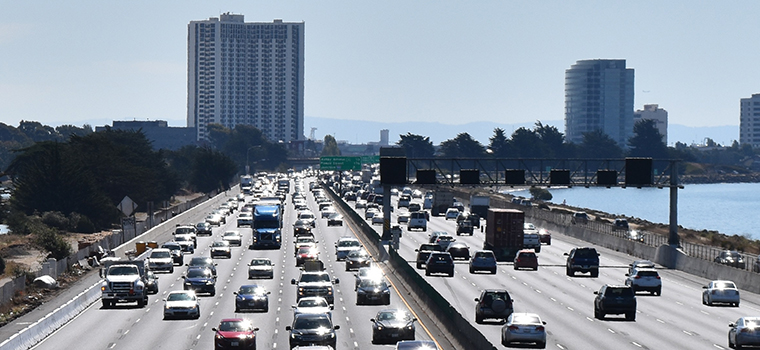A Bold plan to bust Bay Area traffic that has been in development for more than a year appears headed to the ballot in June or November 2018. Last month, the State Legislature approved SB 595 by Sen.

The addition of ferry service to Richmond in 2018 will help to alleviate some of the soul-crushing traffic that can build on the I-80 corridor in Berkeley. Photo by Joel Williams
BC Staff Report
Published: October, 2017
A Bold plan to bust Bay Area traffic that has been in development for more than a year appears headed to the ballot in June or November 2018. Last month, the State Legislature approved SB 595 by Sen. Jim Beall authorizing a regional ballot measure—Regional Measure 3 (RM3)—to invest in major traffic relief projects and mass transit improvements across all nine Bay Area counties. The bill now heads to Governor Brown’s desk, where we are urging his signature.
The RM3 plan includes funding to replace BART’s obsolete railcars, extend BART to San Jose and Santa Clara, ease some of the worst freeway bottlenecks in the East Bay and Peninsula, significantly expand and improve water transit service, accelerate planning for a second Transbay rail crossing and improve other critical regional rail systems like Caltrain and SMART in the North Bay, among others. The plan also calls for robust public oversight and accountability mea-sures.
Ferries in particular secured $300 million in capital for new vessels and terminals and up to $35 million in annual operating costs to significantly enhance service on existing routes and expand to many new locations around the Bay. This injection of new funds will enable the Water Emergency Transportation Author-ity to rapidly scale serv-ice and help deliver near-term congestion relief.
The deal is not done though, as attention now turns to winning voter approval for RM3. The investments included in RM3 would be funded by a bridge toll increase of between $1 and $3—the final amount will be decided in the coming months by regional transportation planners—that has drawn the ire of some critics who argue it places a heavy financial burden on commuters. Some critics argue the investments are not fairly distributed among the region’s nine counties. However, a review of the list of projects clearly indicates that every part of the Bay Area will derive huge congestion relief benefits.
Polling by the Bay Area Council in May found 56 percent of voters support a bridge toll increase to address the region’s soul-crushing traffic. A separate Bay Area Council Poll in April found 70 percent of voters wanted traffic declared an emergency and were willing to raise taxes to address the problem.

